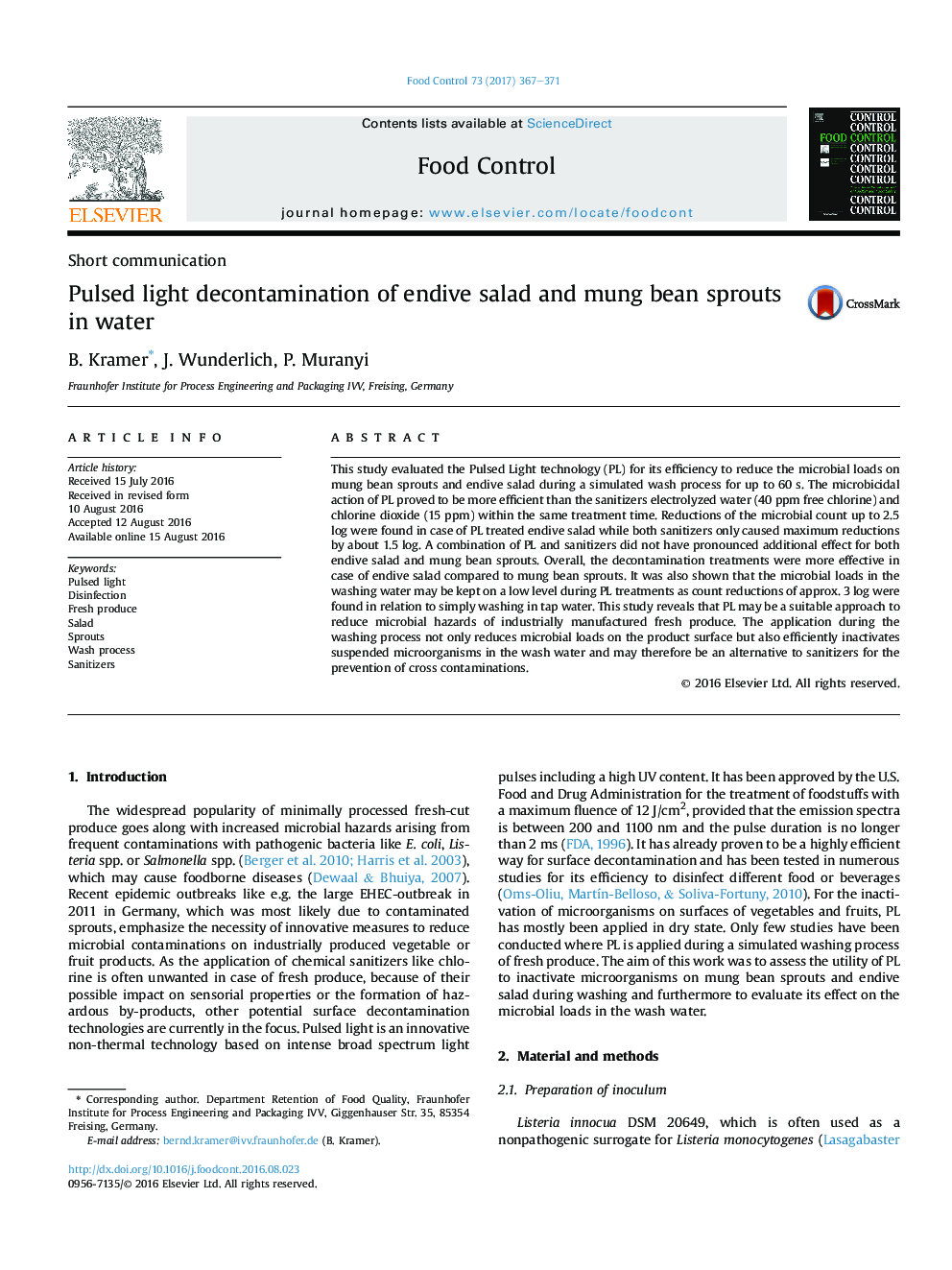| Article ID | Journal | Published Year | Pages | File Type |
|---|---|---|---|---|
| 5767651 | Food Control | 2017 | 5 Pages |
â¢PL reduces microbial loads on endive salad during washing by up to 2.5 log in 60 s.â¢PL is more effective than chlorine dioxide and electrolyzed water.â¢Microbial loads in wash water of fresh produce are kept on a low level due to PL.
This study evaluated the Pulsed Light technology (PL) for its efficiency to reduce the microbial loads on mung bean sprouts and endive salad during a simulated wash process for up to 60Â s. The microbicidal action of PL proved to be more efficient than the sanitizers electrolyzed water (40Â ppm free chlorine) and chlorine dioxide (15Â ppm) within the same treatment time. Reductions of the microbial count up to 2.5 log were found in case of PL treated endive salad while both sanitizers only caused maximum reductions by about 1.5 log. A combination of PL and sanitizers did not have pronounced additional effect for both endive salad and mung bean sprouts. Overall, the decontamination treatments were more effective in case of endive salad compared to mung bean sprouts. It was also shown that the microbial loads in the washing water may be kept on a low level during PL treatments as count reductions of approx. 3 log were found in relation to simply washing in tap water. This study reveals that PL may be a suitable approach to reduce microbial hazards of industrially manufactured fresh produce. The application during the washing process not only reduces microbial loads on the product surface but also efficiently inactivates suspended microorganisms in the wash water and may therefore be an alternative to sanitizers for the prevention of cross contaminations.
